In the last tutorial we learnt what interlocking crochet is, why its fast becoming a favourite technique of mine and how to set up ready to start a pattern. You can read this here.
In this tutorial we are going to learn how to work the two main stitches you will use in interlocking crochet: trif and trib.
Important to know with both of these stitches
- You only ever work into the top of a stitch of the same colour yarn you are currently working.
- The hook is always inserted through both loops of the stitch from front to back as you normally would make a treble.
- The meshes weave in and out of each other but the mesh should never get trapped inside a stitch.
Trif
Trif stands for treble in front. So if you were to write it in US terminology it is dcif or double crochet in front.
How to:
Yarn over, place your hook in front of the mesh of the other colour and, working into the stitch below of the same colour, insert your hook from front to back through both strands of the stitch.
Exactly how the stitch is made depends slightly on the position of the mesh. On the right side a trif into yarn A mesh which will be forward will be just like making a normal stitch just ensuring that the yarn B mesh is clear of the working yarn and hook. But a trif into the yarn B mesh on the right side, the stitch will have to be pulled forward slightly through the mesh in front to ensure that you can make the stitch without wrapping the mesh in the stitch.
On the wrong side of the work the reverse will be the case because the yarn B mesh is forward and the yarn A mesh sits behind
This picture shows the yarn and hook placement for a trif where the mesh is to the rear.

This picture shows the hook and mesh placement for a trif where the mesh is to the front:

Trib
Trib stands for treble in back. So if you were to write it in US terminology it is dcib or double crochet in back
How to:
Yarn over, place your hook behind the mesh of the other colour and, working into the stitch below of the same colour, insert your hook from front to back through both strands of the stitch.
Exactly how the stitch is made depends slightly on the position of the mesh. On the right side a trib into yarn A mesh will need to be pulled out and backwards with your hook to ensure that you can make the stitch without wrapping the mesh in the stitch while a yarn B trib stitch will be worked like a normal stitch just making sure that the yarn A mesh is kept forward and out of the way.
On the wrong side of the work the reverse will be the case because the yarn B mesh is forward and the yarn A mesh sits behind
This picture shows the yarn and hook placement for a trib where the mesh is to the rear.

This picture shows the hook and mesh placement for a trib where the mesh is to the front:

Now you've learnt how to set up and the basic stitches you are ready to learn how to follow an interlocking pattern.


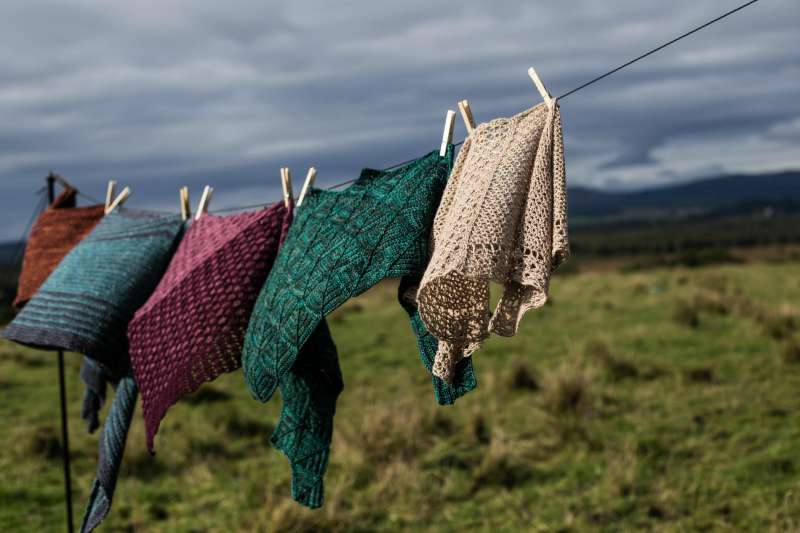
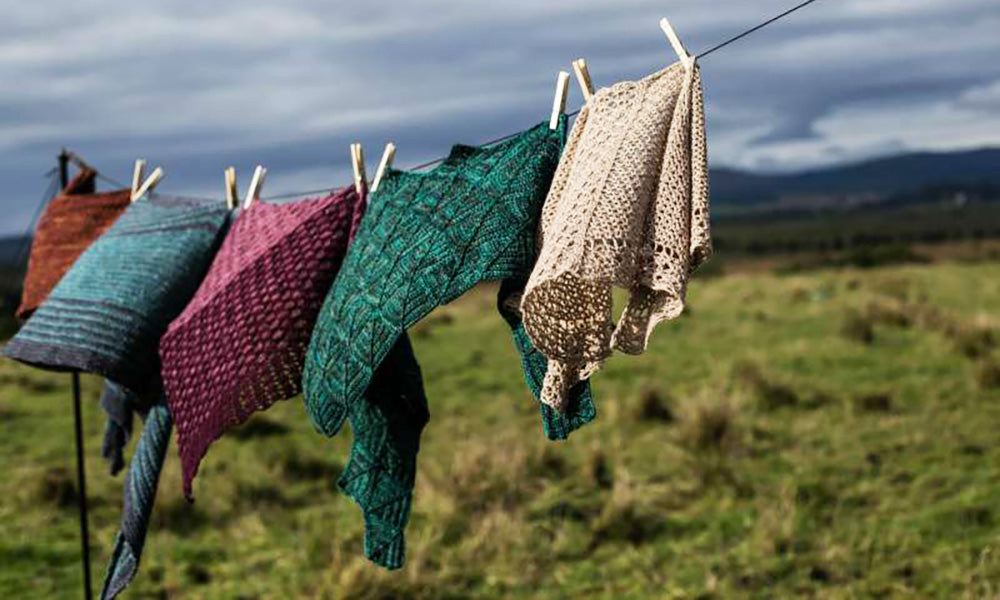
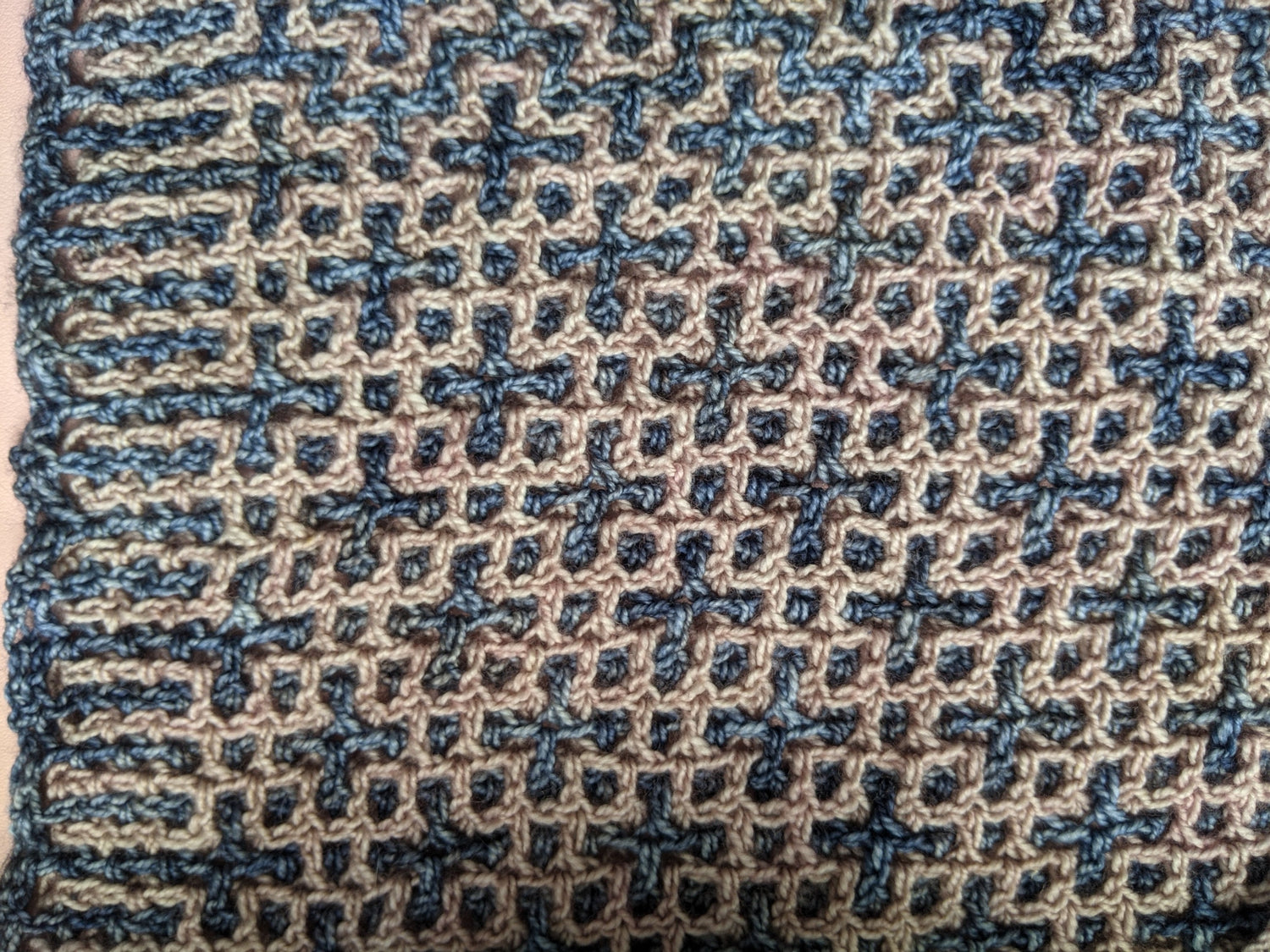
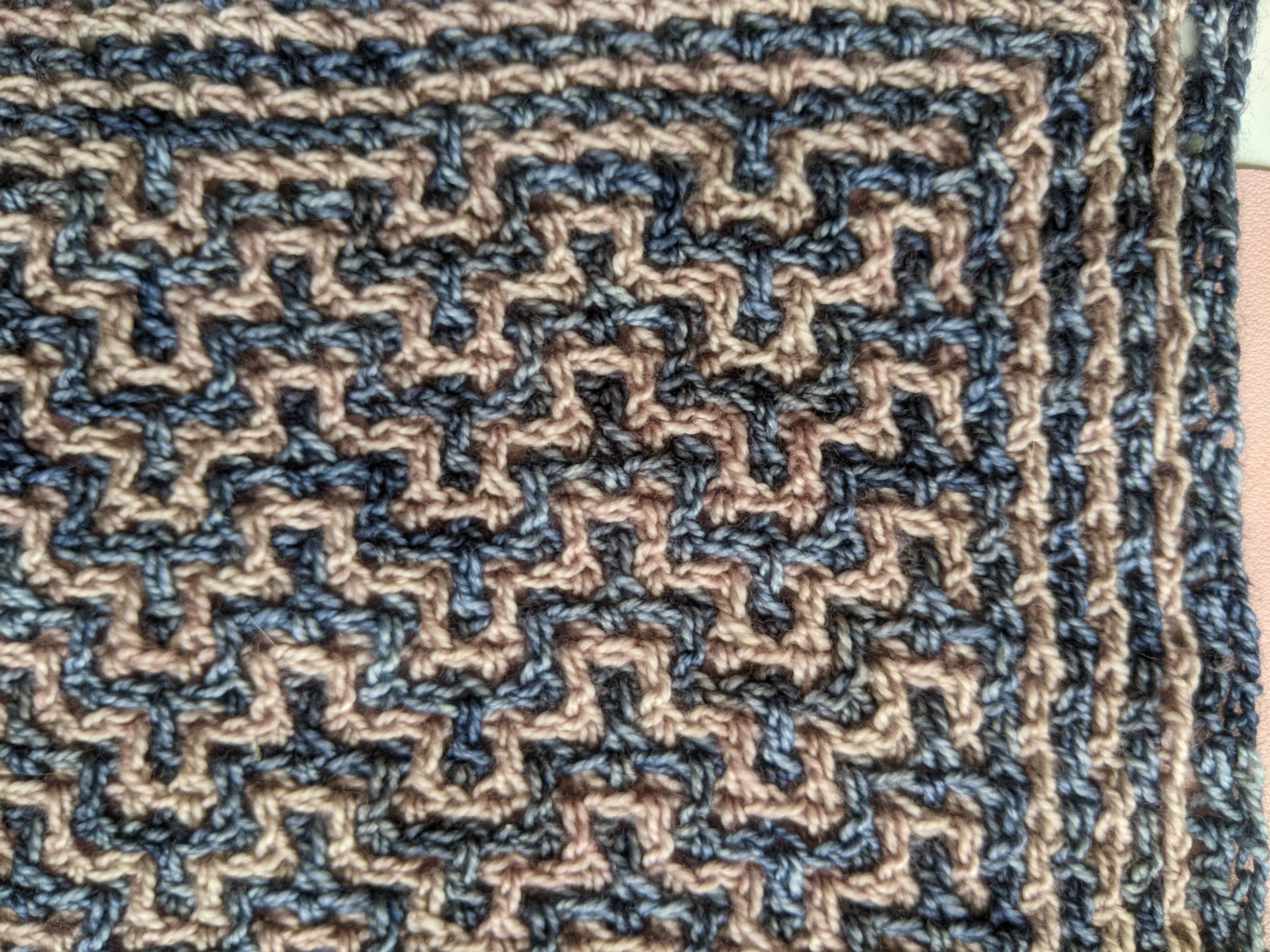
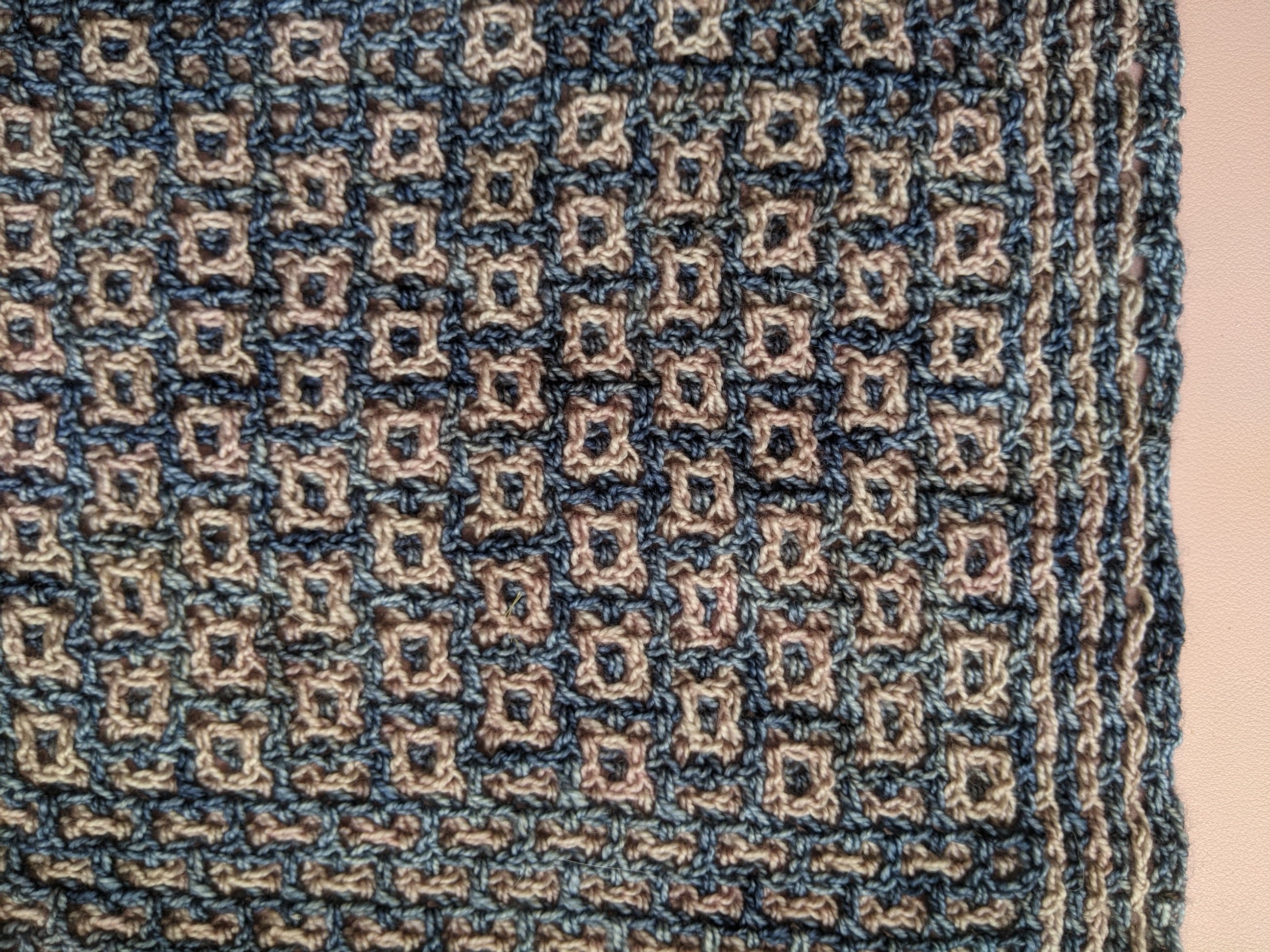
Leave a comment
All comments are moderated before being published.
This site is protected by hCaptcha and the hCaptcha Privacy Policy and Terms of Service apply.